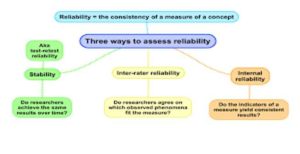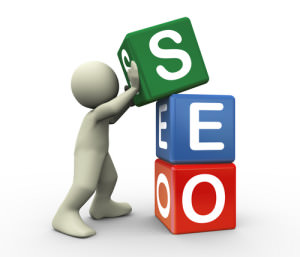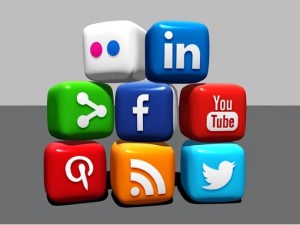How To Build A Marketing Campaign In The Post-Pandemic Era
The pandemic has been a defining event that altered the course of history—like past plagues, natural disasters, and wars. It has significantly changed how people interact with others, engage with businesses, meet their needs, and so on.
Nevertheless, like other era-defining ordeals, the pandemic follows a clear, predictive pattern. First, there comes the event that must be won over. Second, the period of worsening crises, the climax of the pandemic. And finally, the return to normalcy—the so-called ‘new normal.’
In the new normal, consumer priorities have significantly changed. These changes are focused on three key areas:
- How everyday risks and threats affect life concerns;
- How consumers focus on different aspects of quality; and
- How technology affects the purchasing process of every consumer.
Because of the pandemic, consumer expectations and buying patterns have become heavily influenced by technology. Now, people can buy everything online with just a touch of a button. This highlights the importance of digital marketing strategies, such as social media marketing, influencer marketing, and SMS marketing.
Marketing In The Post-Pandemic Era

For marketers to succeed in the post-pandemic era, their marketing campaigns should be rooted in the changes brought by the pandemic. Yet how?
Here are some tips that can help you build a marketing campaign that can take up the new normal:
-
Define Your Marketing Goals
What’s your purpose in creating a marketing campaign? Having a clear goal will help you meet your overall business goals. A goal can be anything from nurturing and converting leads to increasing retention and recommendation rate.
Without a specific and measurable goal, all your marketing efforts will be just a waste of money. That’s because you’ll never know how to analyze the impact of all the hard work you’ve put into your campaigns.
The role of a marketing goal is to provide direction, purpose, and vision. Whatever your goals are, they’re something that can lead you to success. Hitting your objectives means your campaigns are making a significant impact.
When you establish your goals, you want them to be SMART, which stands for:
- Specific – Set specific numbers with specific deadlines (e.g., generate 500 high-quality leads in one week).
- Measurable – Make your goals trackable (e.g., A 50% increase in revenue within one month).
- Attainable – Reach your goals step by step. Never try to achieve your goals in one sitting—it’s impossible.
- Realistic – Be honest with yourself—can you achieve it within a specific period? Know what you and your team are capable of.
- Time-Bound – Make sure your goals have a corresponding deadline. Never work on a goal that you want to hit ‘someday.’
Some examples of marketing goals include:
- Increasing brand awareness;
- Improving internal brand;
- Boosting revenue;
- Generating quality leads; and the like.
Plus, you can use software solutions like those offered by Drop Cowboy and similar providers. Integrating these software solutions into your marketing campaigns will help you reach your goals in a timely manner. Keep in mind that whatever your goals are, they should serve a purpose and benefit your business entirely.

-
Focus On Your Existing Customers
Bringing in new customers isn’t as easy as in the new normal. Instead, focus on growing with your current customers. After all, they’re the ones who stayed with you during the pandemic and economic downturns.
Here are some tips that may help you:
- Analyze Customer Feedback – Check how happy customers are with the quality of what you offer and how their attitude toward your company changes.
- Use Subscriptions – Make sure your subscription plans fit your pricing strategy to ensure the value of your products and stabilize your sales.
- Offer Exclusive Deals To Loyal Customers – Make your loyal customers feel important by offering deals exclusive to them.
- Personalize Services – Choose advocates among your customer and form a team that’ll focus on giving them personalized services to strengthen your relationship with them.
- Educate Your Customers – This can help improve customer awareness and eliminate misunderstandings about the solution you offer.
- Provide Branded Merchandise – First, this isn’t a bribe yet a way to thank your customers who have been with you throughout the pandemic.
Aside from creating campaigns that cater to the needs of your existing customers, you should consider giving them refunds during the lockdown period too. This is especially helpful if your customers weren’t able to maximize their memberships during the pandemic.
Although it could hurt your finances a bit, what you give back can come back tenfold, especially when everything’s back on track. Sooner or later, there will be growth in different areas, such as brand awareness, social media engagement, customer loyalty, and organic traffic.
-
Go Online
With all the restrictions and lockdowns, more and more consumers have shifted online. Instead of stepping out to buy their needs, all they need to do is shop with their mobile devices and hit the checkout button.
The pandemic forced businesses to create websites, social media accounts, and eCommerce platforms to stay on top of the growing competition. Online platforms target remote employees, which are becoming increasingly popular since the pandemic.
Now, it’s time to establish your presence in the online realm. Here are some of the most effective ways to build your online presence for a unique buyer’s journey:
- Create An Email List – This will help you engage with your existing and potential customers on a regular basis. You may use calls to action (CTAs) to grow your list.
- Master Search Engine Optimization (SEO) – SEO is a powerful tactic to build and grow your online presence. Focus on keyword research, link building, factual content, and website audit.
- Offer Value – Focus on creating content that targets the needs of your customers (e.g., educational content and expert advice).
- Stay Active – Having online platforms isn’t enough; you must stay active as well. Post as regularly as possible to keep everyone talking about in the industry.
- Create Social Media Presence – This will help you build credibility and promote your brand. Post everything about your brand regularly and interact with your followers.
- Personify Your Brand – Brand personification allows you to appeal to your target audience while staying true to the values you promote.
Going online allows you to stay on top of the competition. Also, it enables you to stay engaged with your audience, helping your business thrive and stay resilient despite the pandemic.
-
Run Exclusive Offers
As restrictions and lockdowns end, businesses begin to reopen their doors. This is an opportunity to attract people and get them interested in your brand. And the best way to grab their attention is to offer exclusive deals and sales promotions.
Running exclusive deals and offers helps attract new customers and encourage old ones to come back. What’s great about this is that you can use this idea regardless of your industry. However, it works best for industries that were hit hard by the pandemic, particularly the hospitality industry (e.g., restaurants and travel agencies).
Here are some tips to consider when running exclusive deals and offers:
- Welcome New Visitors With An Offer – This isn’t always the best tactic to encourage new visitors to buy right away, but it’s helpful to gain their trust.
- Reward Loyal Clients – Offer discounts to the members of your loyalty club. For example, those who spend a certain amount receive a discount on their next purchase.
- Release Offers During Holidays – During holidays, most people go online to shop. Take advantage of this opportunity and release holiday offers to drive traffic to your site.
- Offer New Product Discounts – Before launching a new product, offer pre-order discounts but add a sense of urgency to encourage people to grab the offer right away.
- Offer Free Shipping – This is a great way to reduce cart abandonment rates, which often increase due to extra costs, such as shipping charges.
- Reward Referrals – Offer discounts to customers who can refer your products and services to others (e.g., refer a friend and get 20% off).
Exclusive discounts and other great money savers could be something people need to convert into one of your customers. And you may offer exclusive membership deals to those who want to invest in you for a certain period. This can help boost income even during hard times.
-
Improve Your Communication Strategy
The communication strategy you implemented in the past may not work well in the post-pandemic era. Now is the time to review the newsletters you send, the content you produce, and the approach you use to attract customers.
You might need to reoptimize your content calendar or archive some blog posts while focusing on articles that address the fears and doubts of the current situation. In other words, get to know your post-pandemic customers and create campaigns that aim to meet their needs.
Here are some tips to improve your communication strategy:
- Be Truthful – Be as truthful as possible when you deliver your message. Don’t try to hide something from your customers to encourage them to engage with you.
- Use Emotional Language – Avoid using words that sound too mechanical. Instead, choose words that emotionally engage with your audience.
- Provide Case Studies – Give your audience evidence showing how your company can solve their problems. This encourages people to invest in you.
- Use Specific Language – Don’t talk at a surface level; instead, go deeper (e.g., ‘We provide excellent customer service by getting your orders done in less than an hour).
- Use Calls To Action – A campaign without action is a waste of resources. CTAs tell your audience what you want them to do. Hence, make sure all your campaigns have CTAs.
- Refine Your Tactics – If you don’t get a response, what should you do after? Tweak your approach and refine it until you get the results you want.
You can give your videos, emails, and ads an overhaul too to keep the current consumer priorities in mind. Telling your customers that you’re always there for them in this critical period will have an effect beyond the pandemic.
-
Focus On Where Your Target Audience Hangs Out
Establishing a presence and creating paid ads on multiple social media networks, such as Facebook, Instagram, LinkedIn, and Twitter, might do you no good. This is especially true for businesses with a small number of followers. What should you do?
Instead of focusing on multiple platforms at once, figure out where your target audience often wanders. Do they spend most of their time on Instagram? How about YouTube, Facebook, Twitter, and Google?
To find out, observe your company. What are your products and services?
- If your business is about beauty products or anything that involves physical appearance, your target audience is probably on Instagram and Facebook.
- If your business handles more complicated life concerns and issues (e.g., addiction recovery facility), your target audience is probably on Google and other search engines.
- If your business offers business-related tools and services (e.g., keyword research tools), your target audience is probably on LinkedIn.
Moreover, here are some social media marketing tips you may consider when building a marketing campaign:
- Be Consistent – People spend hours on social media every single day, trying to keep themselves updated about everyone around them. That’s why it’s important to post as regularly as possible to stay on top of their newsfeeds—and their minds.
- Post At The Right Time – You need to post content at the right time to ensure maximum exposure and better engagement.
- For Facebook, post between 7-9 AM, 1-3 PM, and 7-9 PM;
- For Instagram, post between 6-9 AM, 12-32 PM, and 5-7 PM;
- For Twitter, post between 8-10 AM and 6-9 PM; and
- For LinkedIn, post between 12-3 PM, 3-6 PM, or 6-9 PM.
- Cut Back On Hashtags – Hashtags may help increase exposure and engagement. However, using too much of them can do more harm than good. One or two hashtags are enough to increase engagement—anything more than that may reduce engagement.
- Share Quality Visual Content – Visual content is essential to social media. It’s more likely to be shared than other forms of content, creating value, generating traffic, and increasing sales.
Final Thoughts
Having a solid marketing campaign in the post-pandemic era is crucial to the overall success of your company. This can help your business stand again and give you an edge in the competition. The key here is to focus on the current priorities of your customers as much as your own. They’re the ones who build your business and help you grow it, regardless of your strategy.








